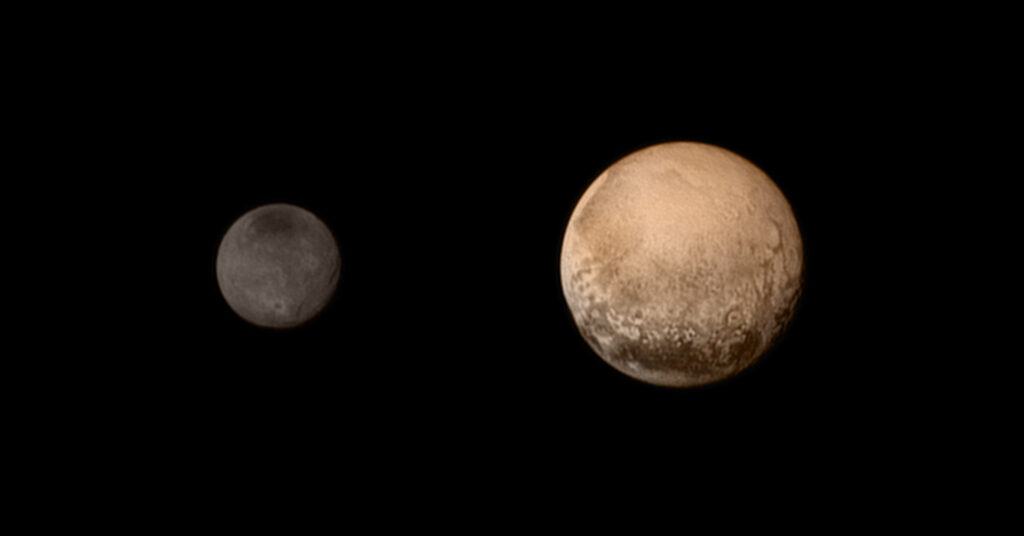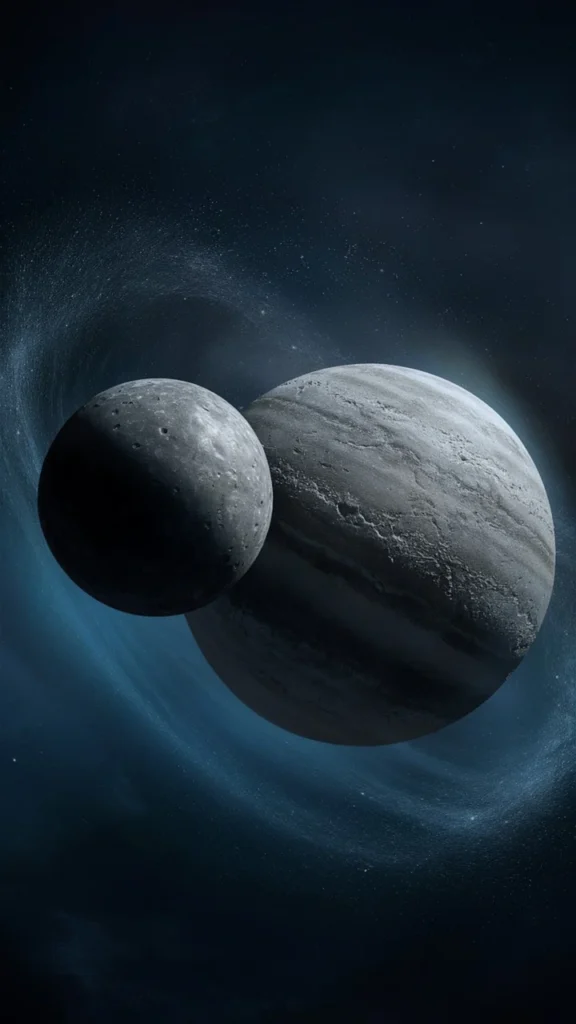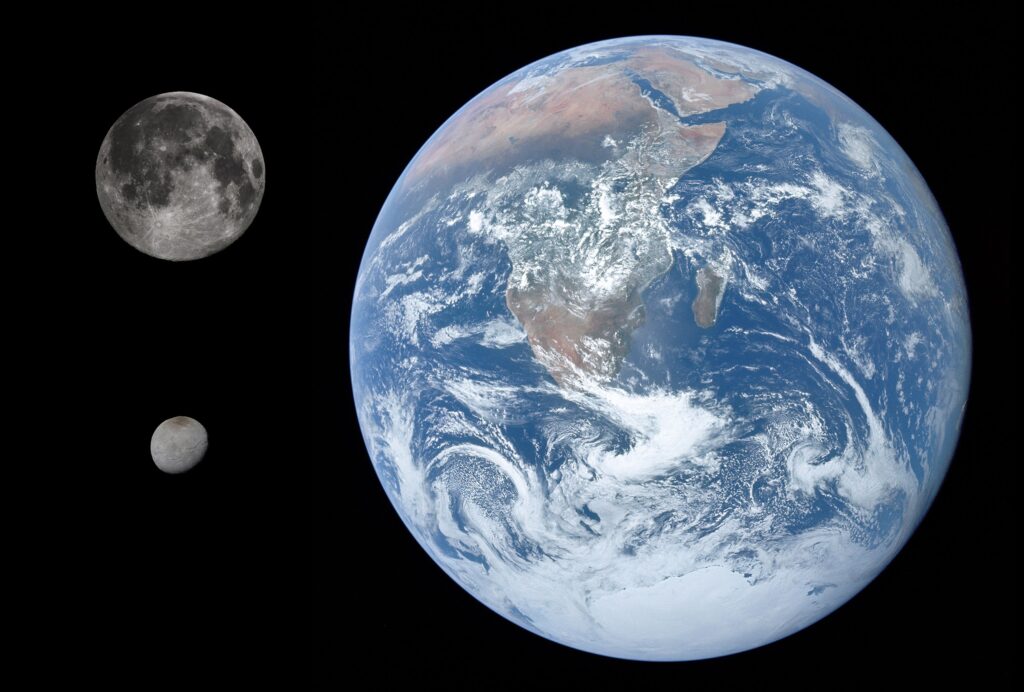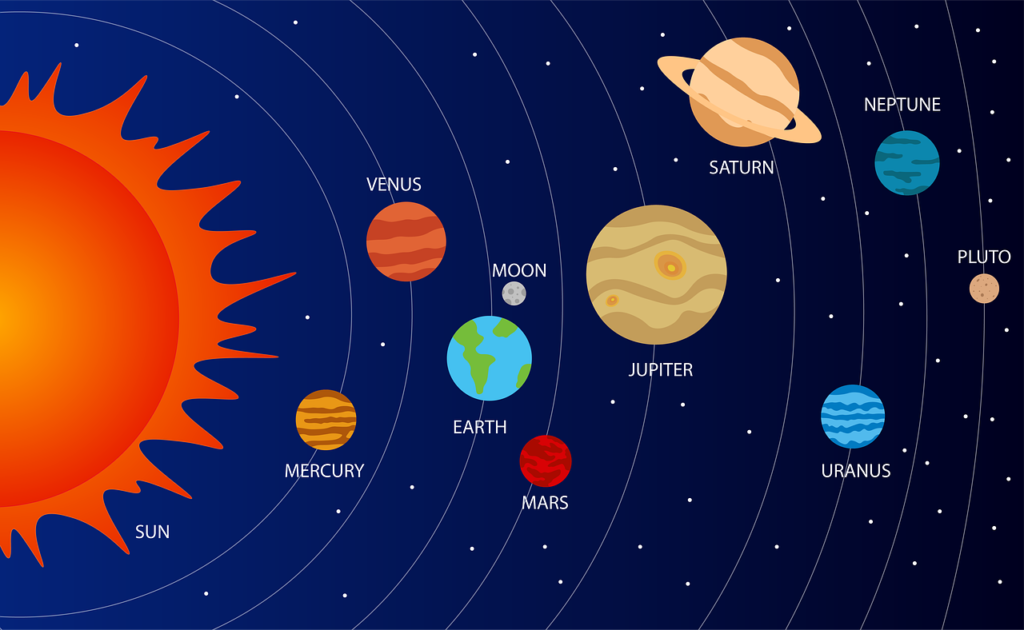New possibilities for understanding the origin and evolution of the icy bodies of the outer Solar System may soon arrive thanks to Charon, Pluto’s largest moon. It would be better to say, actually, that the credit is due to the study conducted by a team of scientists from the Southwest Research Institute in Boulder, Colorado, who, under the leadership of Silvia Protopapa and with the help of the James Webb Space Telescope have discovered the massive presence on Charon of carbon dioxide and hydrogen peroxide.
The study, published in Nature Communications, aimed at analysing the chemical composition and processes affecting Charon’s icy surface and greatly extended the knowledge available to date. Using the Near-Infrared spectrograph of the James Webb Space Telescope, the researchers observed the moon at wavelengths between 1.0 and 5.2 micrometres. This is a huge step forward compared to what has happened since 1978, the year of its discovery, until today, when the analysis of Pluto’s largest moon was limited to wavelengths of less than 2.5 micrometres.
The significance of Charon
This limitation has left several gaps in the composition of Charon’s surface. Scientists have discovered the presence of water ice, organic compounds responsible for its grey and red colouring, and ammonia-containing species, while carbon dioxide and hydrogen peroxide have yet to be detected.
A medium-sized body with a width of about 1,207 km, Charon is located in the Kuiper Belt, which groups icy debris, dwarf planets, and comets at the edge of the solar system. The only medium-sized body for which geological mapping is available, Charon does not have a surface obscured by methane or other volatile ices, which has allowed researchers to obtain information on the effects of exposure to sunlight.
By comparing spectroscopic observations with laboratory measurements, the team led by Protopapa determined that carbon dioxide is present on Charon as a surface coating on a subsurface rich in water and ice. ‘The geological features suggest that the subsurface materials have been exposed by impact events, providing a window into the composition of the lunar subsurface,’ the scientists explained.





While the presence of carbon dioxide was expected from previous missions, the detection of hydrogen peroxide was much more surprising. Known since the 2000s on the surface of Europa, Jupiter’s moon, the presence of H₂O₂ on Charon demonstrates its ability to stay in profoundly different environments.
After conducting four different observations, all with identical results, scientists believe the presence of hydrogen peroxide is due to the processing of water ice on the surface of Charon caused by irradiation and sunlight.
Although still not a definitive step to absolutely determine new information about Pluto’s moon, the Southwest Research Institute team’s findings set a new starting point for future analyses that can explain the interactions between solar radiation and surface compositions of these distant icy moons. Thus providing more data on the surface of celestial bodies in the outer Solar System.


